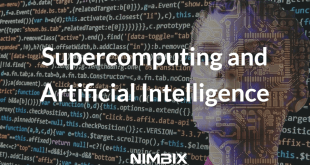In today’s rapidly evolving technological landscape, Virtual Reality (VR) and Augmented Reality (AR) have emerged as powerful tools with significant implications for defense, security, and disaster management. Let’s delve into how these immersive technologies are revolutionizing various sectors and reshaping our approach to security and emergency preparedness. Understanding Virtual Reality …
Read More »3D Printing Emerges as Key Fabrication Technology for Soft Robotics
Introduction: In recent years, the field of soft robotics has experienced remarkable growth, thanks to advancements in fabrication technologies. Among these, 3D printing has emerged as a game-changer, offering unparalleled capabilities in creating complex, customizable soft robotic systems. With its ability to produce high-quality structures and simultaneously print multiple materials, …
Read More »Unleashing the Power of Personal AI: A Paradigm Shift in Customized Language Models
The relentless march of technology has thrown open the doors to a new chapter in artificial intelligence: the age of the personally-tailored language model. No longer are we tethered to generic assistants struggling to grasp our unique quirks and areas of expertise. This paradigm shift, where AI bends to our …
Read More »Battling the Dark Corners of the Web: How Google’s Altitude Empowers Small Platforms to Fight Terrorism
The internet, a vast and vibrant tapestry of information, unfortunately also harbors dark corners teeming with extremist and terrorist content. Terrorist groups have increasingly utilized social media platforms like YouTube, Facebook, and Twitter to further their goals and spread their message due to their convenience, affordability, and vast reach. These platforms …
Read More »Eye in the Sky: The Rise of Military Intelligence, Surveillance, and Reconnaissance (ISR) Aircraft and Drones
ISR aircraft and drones have a rich history rooted in the evolution of military technology and tactics. From the early days of aerial reconnaissance in World War I to the advent of unmanned aerial vehicles (UAVs) or drones, these advanced systems have reshaped military operations and strategic thinking. These flying …
Read More »From Jeopardy Champion to AI Powerhouse: Evolution of IBM Watson 1.0 to WatsonX
Introduction: In the rapidly evolving landscape of artificial intelligence and cognitive computing, IBM Watson has been a pioneering force, continually pushing the boundaries of what’s possible. From its initial release as Watson 1.0 to the transformative WatsonX, IBM’s cognitive computing journey has been a remarkable exploration of innovation and advancement. …
Read More »Unlocking Sustainable Energy: AI Supercharges the Future of Energy Storage Systems
Introduction: In the ever-evolving landscape of technology, artificial intelligence (AI) has emerged as a catalyst for transformation across diverse industries. The energy sector is no exception, with AI presenting a promising avenue for enhancing the performance of Energy Storage Systems (ESS). This article explores how the integration of AI can …
Read More »Elevating Swarm Communications: ChatGPT’s Conversational Intelligence Meets Collective Collaboration
Swarm communication, characterized by the coordination and collaboration of multiple entities to achieve common goals, is a fascinating area that has witnessed significant advancements in various fields. From drone swarms for search and rescue missions to collaborative robotics in manufacturing, the ability of a collective to work in unison offers …
Read More »Navigating the Cosmos: Wearable Tech’s Role in Overcoming Spatial Disorientation in Space
Introduction In the vast expanse of the cosmos, where every decision carries immense consequences, spatial disorientation poses a significant challenge for astronauts. This article explores the risks associated with spatial disorientation in space and the potential role of wearable technology in mitigating this peril. The Challenge of Spatial Disorientation in …
Read More »Supercharging Intelligence: The Rise of Supercomputers Optimized for AI and Machine Learning
Introduction: The realm of artificial intelligence (AI) and machine learning (ML) has witnessed a seismic shift in recent years, propelled by the remarkable success of deep neural networks. Central to this transformation is the unprecedented availability of computational processing power, setting the stage for groundbreaking achievements in AI. As complex …
Read More » International Defense Security & Technology Your trusted Source for News, Research and Analysis
International Defense Security & Technology Your trusted Source for News, Research and Analysis


